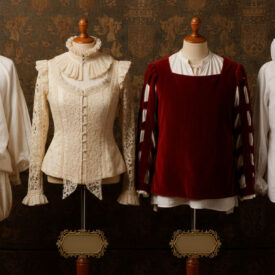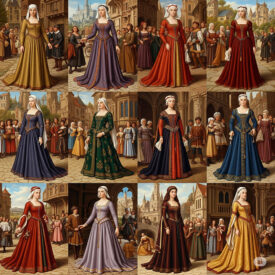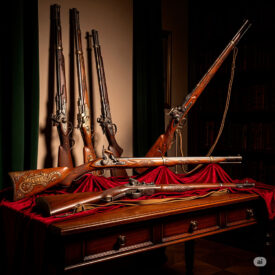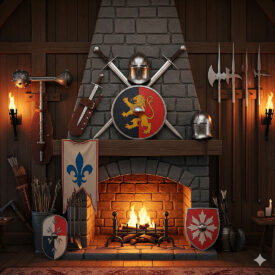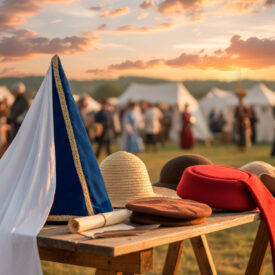Did you know a simple shoe can tell us who owned it, what they did for a living and even how much power they held in society? Medieval footwear was not just protection: it was visual language, artisanal technology and a social symbol. In this overview you will discover why each pair tells a story, how they were made, what their shape meant and why many techniques are still in use today.
A journey through time with medieval footwear: beyond fashion and necessity
Medieval footwear was far more than a functional item: it was a mirror of society, technology and daily life. From the humble shoes of peasants to the elaborate pieces of the nobility, every pair offered a unique window into history. Materials, construction and decoration indicated the wearer’s status, occupation and regional origin.
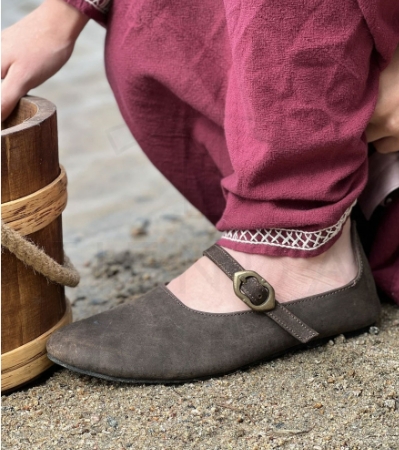
Types of footwear: a look at medieval variety
The Middle Ages showed a surprising range of styles, driven by social class, function and fashion. Below is a summary of the most relevant types and their meaning.
- Poulaines or pointed-toe shoes: Emblematic of the late medieval period. Points could measure between 10 and 50 cm; a sign of status and wealth. Sometimes they were tied to the ankle or waist with chains to walk.
- Square-toed shoes: More practical and comfortable. Worn by several social orders; promoted by monarchs who restricted poulaines.
- Boots: Protection and work. From agricultural boots to a knight’s ankle boots with metal reinforcements.
- Sandals and flip-flops: Simple models for warm climates and lower strata.
- Slippers: Domestic use; light, made of fabric or fine leather.
- Clogs: Carved from a single piece of wood; resistant to mud and damp.
- Chopines: Overshoes with wooden soles that elevated the foot; in Venice they could reach extreme heights.
- Tied shoes (Bundschuhe): Simple leather shoes, easy to repair.
- Ankle boots: Shoes that covered the ankle, closed with laces or straps; more exclusive.
- High boots: Tall, flexible boots, subject to sumptuary laws because of their luxury.
- Hose with soles: A practical innovation: hose with an incorporated sole, used by the bourgeoisie.
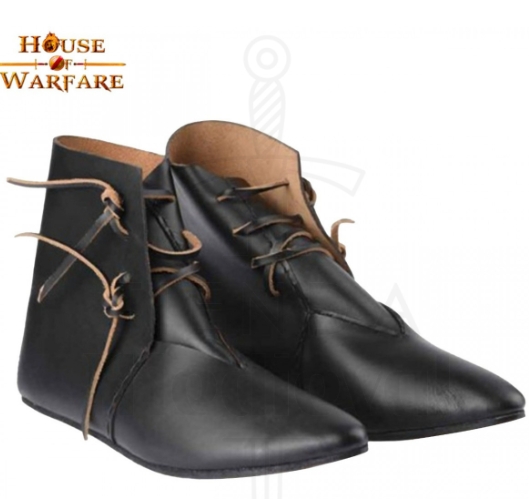
Poulaines and crackowes: fashion that defies common sense
The crackowes and their variants, the poulaines, pushed fashion to extremes. Originating in Eastern Europe, their toes were elongated as a display of ostentation. In extreme cases they were fastened with laces or ornamental chains. The extravagance drew criticism: the Church singled them out as a symbol of vanity and some kings restricted their use by decree.
Square-toed shoes and a return to comfort
The reaction was practical: wider shapes began to prevail, such as the “bear-paw” shoe, prioritizing stability and comfort. This change shows how fashion and ergonomics have interacted over time.

Materials and construction: the heart of medieval footwear
Manufacture was artisanal and labor-intensive. Each pair was handmade, which made the shoe a unique product. The main materials were leather, wood and textiles, each offering advantages and limitations.
Leather: the predominant material
Leather was the first choice for its versatility, durability and availability. Different types were worked depending on the function:
- Cowhide (bovine leather): Robust, ideal for soles and exteriors resistant to water.
- Goatskin: Soft and flexible; the base of cordovan, a luxury leather from Córdoba prized by the nobility.
- Sheepskin: Insulating and breathable; useful in cold climates.
- Other leathers such as deer or elk were used in specific pieces for their softness.
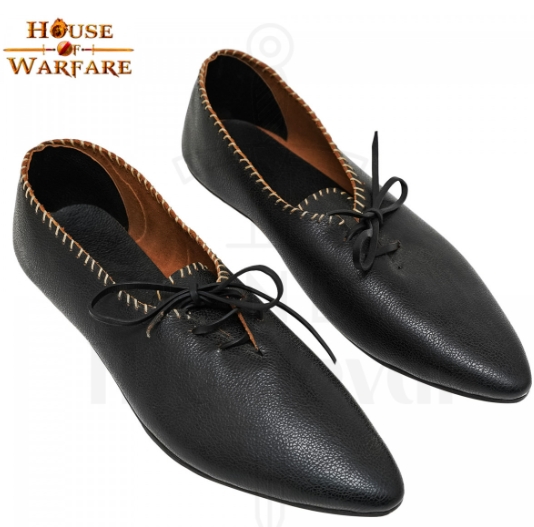
Tanning methods
- Vegetable tanning: Slow and durable; produced firm, long-lasting leather.
- Mineral tanning (alum): Faster; produced soft leather that was easy to dye.
- Oil tanning: Created waterproof leather, ideal for military or work use.
Wood and espadrilles
Wood, easy to carve, was common in clogs and chopines. Soft woods like poplar or willow were light; beech and oak provided durability. Clogs protected against cold and mud, although they were less comfortable.
Textiles and plant fibers
Linen, hemp and esparto complemented leather and wood for linings, insoles and summer footwear. Espadrilles and sandals benefited from these fibers for their lightness and breathability.
Construction innovations
The Middle Ages were an artisanal laboratory: multi-layered soles, cork used as an insole, the reversible shoe technique (sewn inside out and then turned), and strong guild specialization all made the shoe an increasingly refined product.
Comparative table: types, materials, use and impact
| Type | Common materials | Use/practicality | Status/Impact |
|---|---|---|---|
| Poulaines / Crackowes | Fine leather, silks, sometimes luxurious linings | Decorative; impractical | High nobility; symbol of ostentation; health issues |
| Square-toed shoe | Cow or goat leather, velvet in noble versions | Daily use; more comfortable | Widespread use; less regulated |
| Boots and ankle boots | Thick leather, metal reinforcements | Protection for work and combat | Associated with warriors and laborers |
| Clogs / Chopines | Wood, esparto, leather | Protection against mud and moisture | Popular among lower classes; in Venice a symbol of extreme status |
| Sandals / slippers | Plant fibers, fine leather, fabric | Warm climates and domestic use | Common among peasants and noblewomen indoors |
Footwear as a status symbol and object of controversy
Luxury was expressed in the length of a toe, the fineness of the leather or metallic ornaments. Sumptuary laws restricted who could wear what, seeking to preserve social order. The Church criticized the extravagance; some moralists even called poulaines “Satan’s claws.” Beyond morality, there were real health effects: bunions, deformities and fractures from falls.
Challenges, repair and adaptation to environment
Shoes were expensive and repaired to the limit: replaceable soles, leather patches and metal rivets extended their lifespan. Climate dictated construction: wool linings and straw insoles in the north; more breathable constructions in the south. Hygiene was maintained with greases, oils and aromatic herbs inside the footwear.
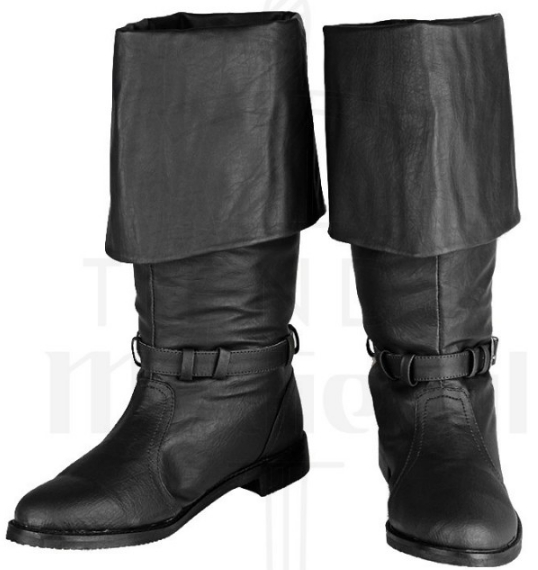
Cordovan: luxury and technique
Cordovan, goatskin worked in Córdoba, was synonymous with refinement. Light and soft, it was used in high-end shoes. Its fame even influenced language (for example, the French term cordonnier for shoemaker), and its technique demonstrates the cultural and commercial exchange across the Mediterranean.
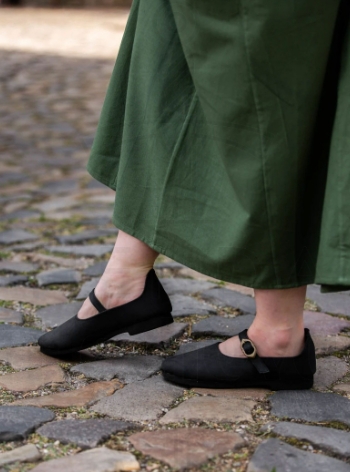
Impact of medieval footwear on contemporary fashion
Many medieval elements reappear in later centuries: poulaines influenced Renaissance chopines and the search for bold shapes; traditional sewing and tanning techniques resurface in artisanal and sustainable movements. The interest in natural materials and manual processes fuels a contemporary reinterpretation.
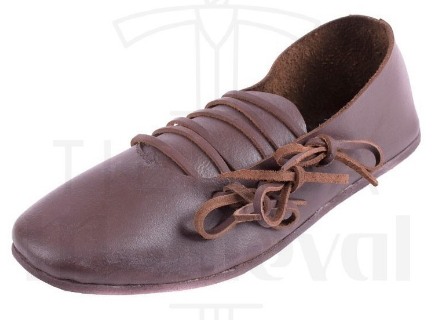
How to identify a faithful historical reproduction
- Check the stitches: the reversible shoe technique and multi-layer soles are signs of authenticity.
- Check materials: authentic cordovan or vegetable-tanned leather reveal tradition.
- Analyze usage: exaggerated chopines or poulaine variants should be accompanied by support structures or historical explanations.
Revival of techniques and sustainability
Today there is a resurgence of interest in traditional methods: natural tanning, hand stitching and local materials. This return is not mere nostalgia: it responds to the search for durability and a smaller environmental footprint. Many brands and artisans recover medieval precision to create footwear with story, soul and longevity.
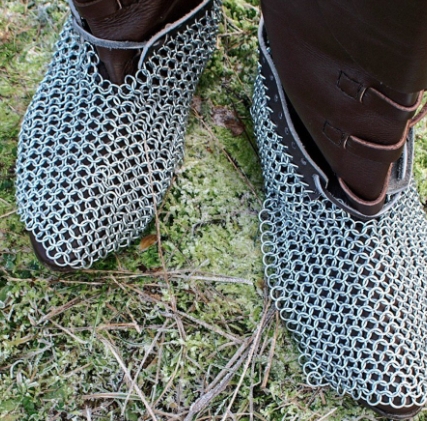
What each shoe tells us
Each medieval pair is a witness: a clog speaks of mud and agricultural work; a cordovan of travel and Mediterranean trade; a poulaine of ostentation and social rules. Studying them helps us understand the economy, technology and material culture of an era that still influences our steps.
If you’re interested in exploring reproductions, materials or accessories, look for pieces that explain their manufacturing process. Authenticity is not only aesthetic: it is technical and functional.
SEE MEDIEVAL AND PERIOD FOOTWEAR | SEE MEDIEVAL ACCESSORIES | SEE MEDIEVAL AND PERIOD CLOTHING



